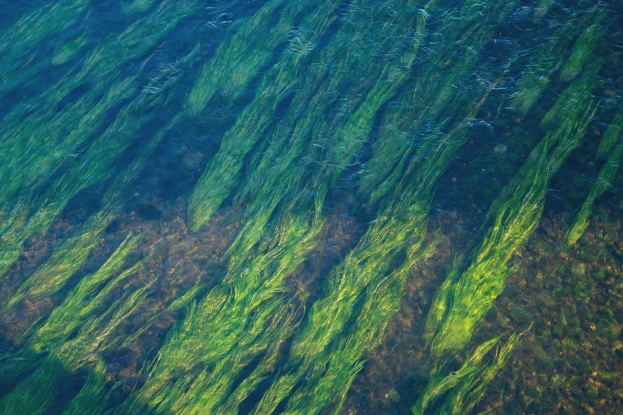By Joe Guidry, former opinion editor, The Tampa Tribune
To hear some elected officials tell it, regulations are the devil’s spawn – they destroy efficiency, increase prices and kill jobs. In fact, during the political season, the word regulations is almost always preceded by “job-killing.”
There is some truth to the claim that bureaucratic red tape and command-and-control policies hamstring enterprise and deter innovation, the reason officials should take care when adopting new rules.
But the idea that environmental regulations aren’t necessary is absurdity. Indeed, prudent regulations not only protect the environment and public health but also benefit the economy, something our leaders in Washington should keep in mind as they seek to reform the regulatory system.
A 2013 study by the Office of Management and Budget a few years ago found that U.S. Environmental Protection Agency rules over the past decade had an estimated cost to the economy of $45 billion but had achieved $640 billion in benefits. Such broad calculations from a White House office can hardly be treated as gospel. But there is plenty of local evidence of the value of environmental protections.
Tampa Bay is a telling example, as I pointed out when I worked at The Tampa Tribune Editorial Department. Prior to the adoption of strong state, local and federal clean water regulations, Tampa Bay was a polluted soup of runoff and discharges. Regulations changed that. Among those that helped save Tampa Bay was the Clean Water Act of 1972 that, among other things, required municipalities to clean wastewater discharges.
No one can argue that those regulations haven’t been beneficial. Forty years ago, pollution and development had caused Tampa Bay to lose 81 percent of its original 76,500 acres of seagrasses and 44 percent of its original 25,000 acres of mangrove and salt marshes.

Now, thanks to those reviled regulations, Tampa Bay is healthier than it has been in generations. The Bay’s seagrasses have grown by more than 9,000 acres since the 1990s, and scientists say Tampa Bay is as clean as it was in the 1950s, when the region’s population was less than 500,000. Now it has close to 3 million residents.
Today, visitors to The Florida Aquarium get a vivid view of Tampa Bay’s comeback on Tampa Bay cruises where they can see porpoises, manatee and other marine life. The Bay’s revival is a direct result of pollution restrictions.
The seagrasses that were being choked out by cloudy water that prevent growth now receive enough light to grow. That means more habitat for marine life, including popular sportfish such as snook, trout and redfish. Healthy grass beds filter water while also deterring erosion.
Those allegedly “job-killing” regulations not only cleaned up Tampa Bay but made the area a more appealing place to live, work and visit.
Does anyone think that Tampa Bay Lightning owner Jeff Vinik would be pursuing a $1 billion development project on Tampa’s downtown waterfront if Tampa Bay had remained a putrid mess? Or that all the investment and growth the region has enjoyed would have occurred if elected leaders had taken a hands-off attitude toward the polluters?
Does anyone think Tampa would have landed the recent College Football Playoff National Championship that brought so many visitors to the region, not to mention four Super Bowls and numerous other sports championships, had it continued to allow Tampa Bay to become a cesspool?
There is no question that regulators sometimes go too far and impose laws without adequately weighing the cost-benefits. They also sometimes fail to consider how market forces could advance their goals. Still, the positive side of the regulatory equation is overlooked far too often during political debates. Restrictions, without question, should be based on sound science and common sense.
No doubt, maintaining clean water and air involves costs and sometimes may indeed eliminate certain jobs. But the reckless destruction of our wonderful resources is, in the long run, a far greater threat to Florida’s economic prospects.![]()

Joe,
Being a crabber on LMR for 40 years and listening to comments concerning to climate change and guess I’ll add my vision of impact to LMR and blue crabbing.
Climate change is causing high tides to be higher and lower tides to be lower. Today, on LMR, Goat Island is experiencing erosion from faster out going tides caused by higher tides. Slash Pines planted on Goat Island by members of Little Manatee Preservation Committee in 1987 are today falling into river caused by climate change higher tide erosion.
Blue crabs are estuarine detritus feeders that depend on rain fall to deliver upland nutrients to Tampa Bay. Today, appears we’re in a drought in HC/FL, seeing fires across Florida and weeds dying in my yard. Blue crabs in search of detritus rich runoff into river are migrating to upper reaches of LMR leaving higher salinity Tampa Bay waters in search of brackish water detritus.
We praise clearer Tampa Bay water from better land management regulations, but fail to recognize our negative actions on the environment from green house gases.
The question I’m asking, “Is Tampa Bay water quality better today resulting from climate change and not better land management?”
Gus
Capt. Gus Muench
3031 Manatee Ave
Ruskin, FL 33570-2809
813- 645-6063, 645-6578
cell – 758-1863
http://crabbyadventures.com/home
LikeLike